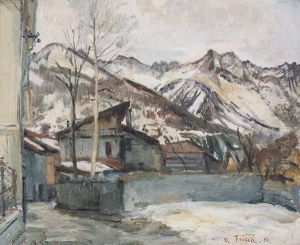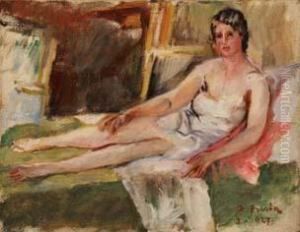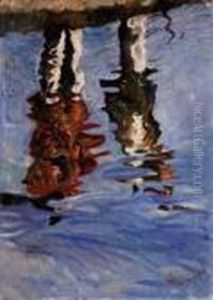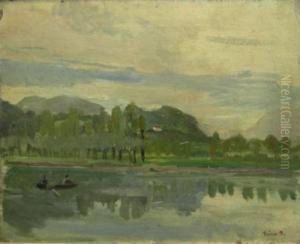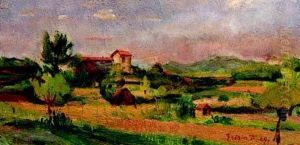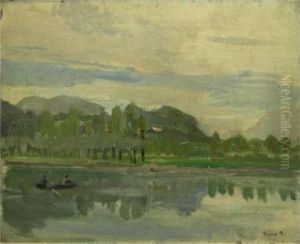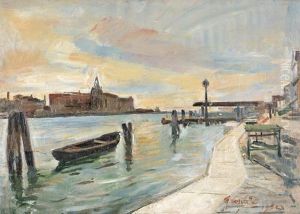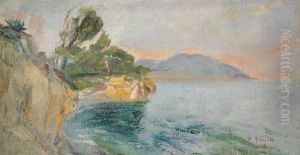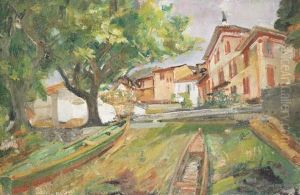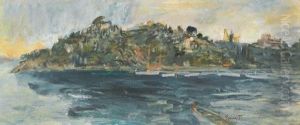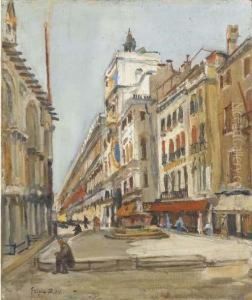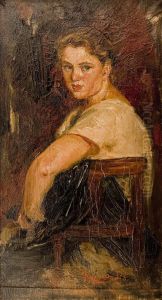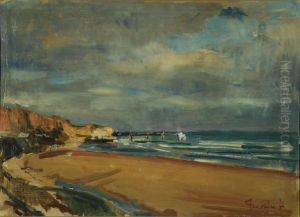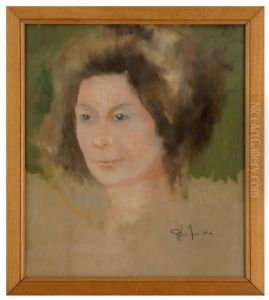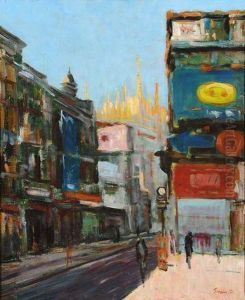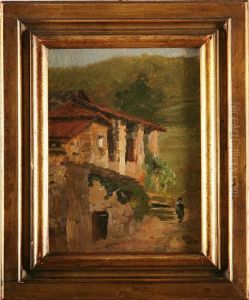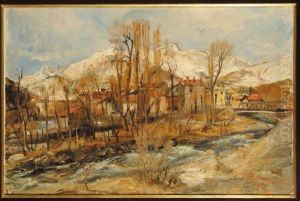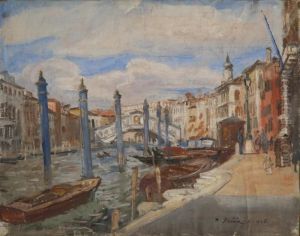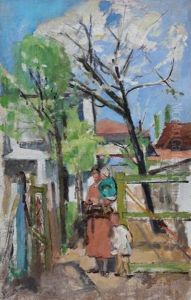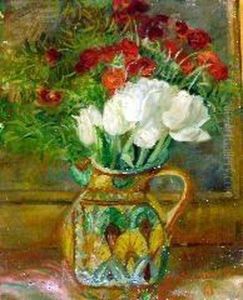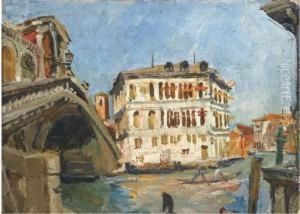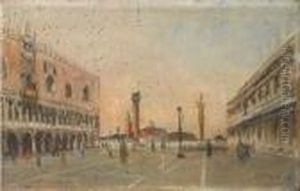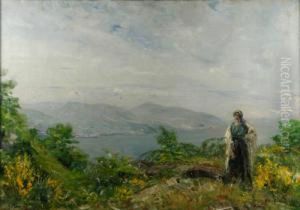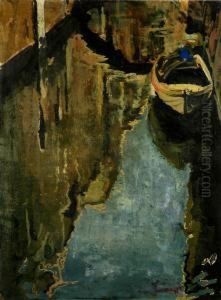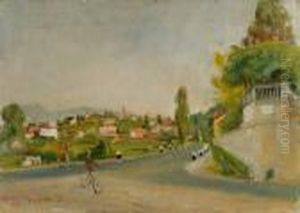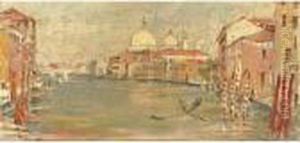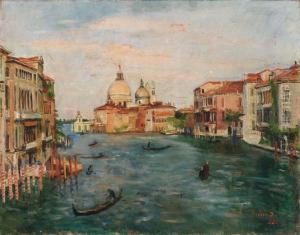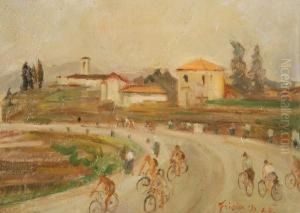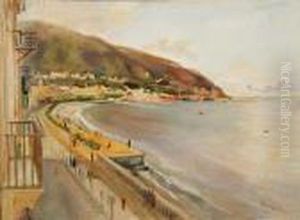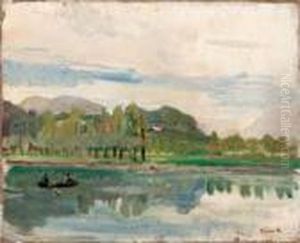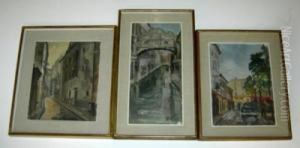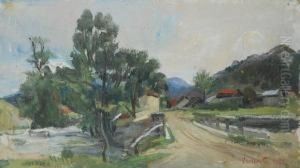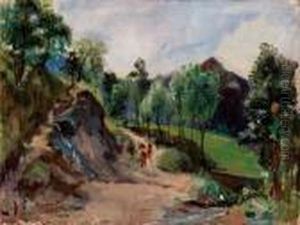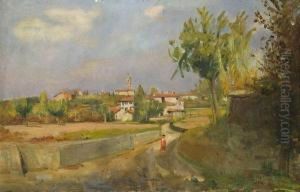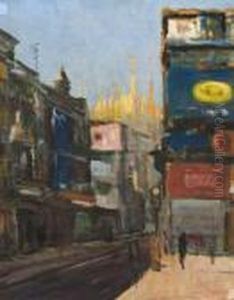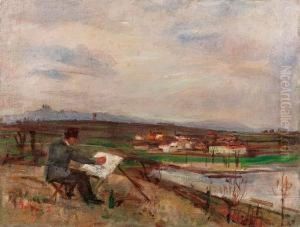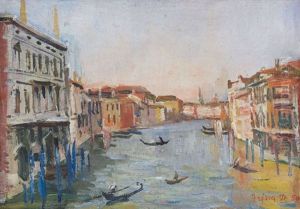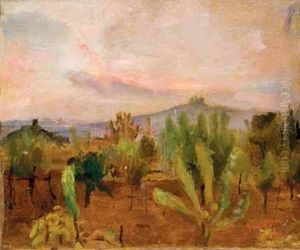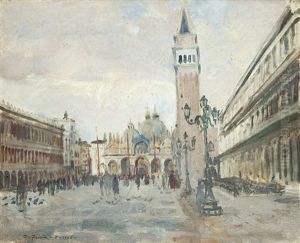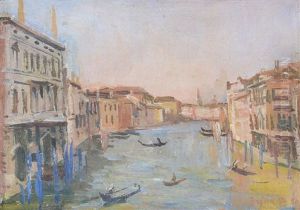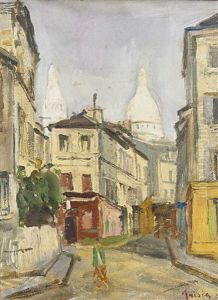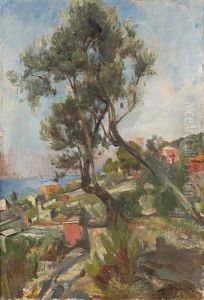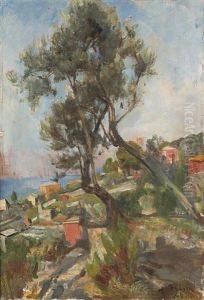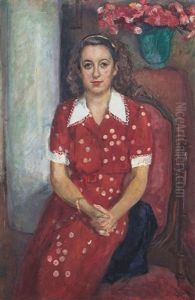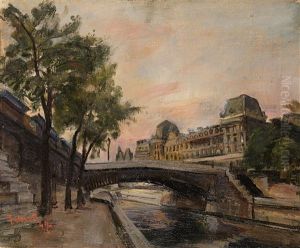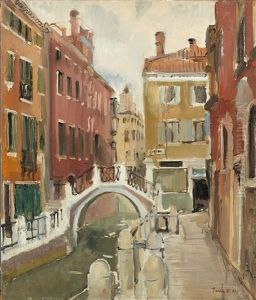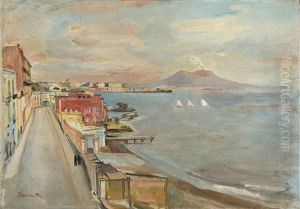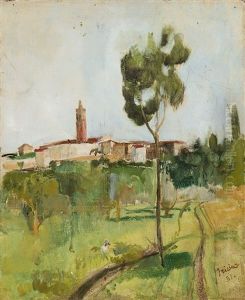Donato Frisia Paintings
Donato Frisia was an Italian painter born on December 17, 1883, in Intra, Verbania, Italy. His artistic journey began under the guidance of Cesare Tallone at the Brera Academy in Milan, where he developed his skills and absorbed the influences of the Lombard and Piedmontese painting traditions. Frisia's work was predominantly characterized by his focus on light and color, which he used to capture the essence of landscapes, interiors, and still lifes with a distinctive sensitivity.
In the early 20th century, Frisia's style evolved as he became involved with the Divisionist movement, which emphasized the separation of colors into individual dots or strokes to achieve a more vibrant luminosity in paintings. This technique was rooted in the scientific theories of color and light, and Frisia adeptly applied it to portray the atmospheric effects and textures within his compositions.
Despite his association with Divisionism, Frisia did not restrict himself to this style alone. He was versatile and open to the influences of Post-Impressionism and Symbolism, which can be seen in the diverse range of his work. Throughout his career, he maintained a delicate balance between traditional subjects and innovative techniques, allowing him to craft a unique identity within the Italian art scene.
Frisia's paintings were well-received, and he participated in numerous exhibitions, including the Venice Biennale and the Quadrennial in Rome. His works were appreciated for their poetic quality and the harmony of their color palettes. After World War II, Frisia's style underwent a further transformation, displaying a more serene and reflective quality, which some art historians attribute to the psychological effects of the war period.
Donato Frisia continued to paint and exhibit his work until his death in Omegna, Italy, on July 21, 1953. His legacy is preserved in the collections of various Italian galleries and museums, and his contribution to the Divisionist movement remains an important chapter in the history of Italian art. Frisia's exploration of light and color dynamics has earned him a place among the notable artists of his era, and his works continue to be studied and admired for their luminous and evocative qualities.
